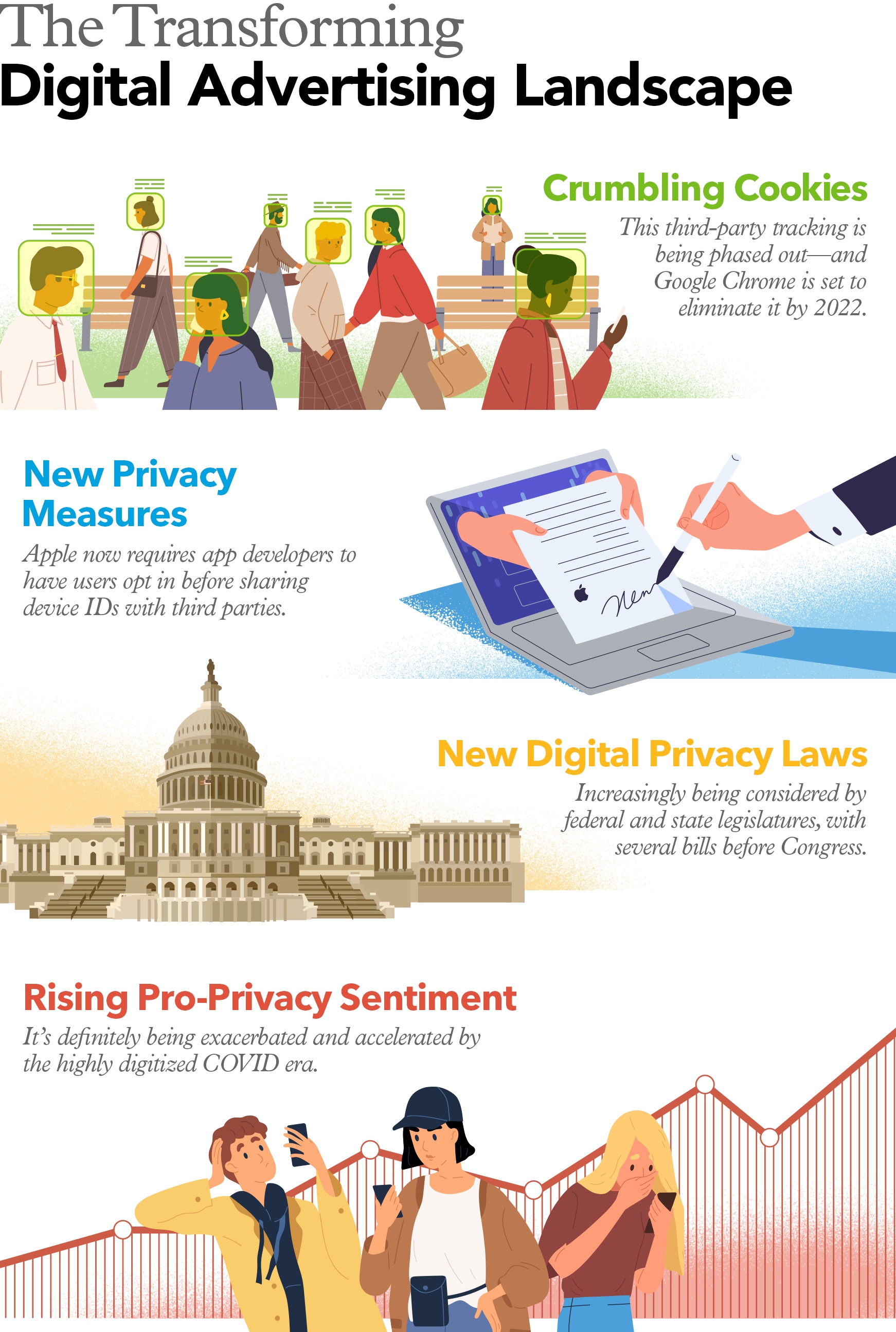It’s fair to say that for brands, 2020 was a year full of COVID-driven uncertainty and quick marketing pivots due to shifting consumer behavior and expectations.
As we all prepare for 2021, we’re anticipating similar phenomena—particularly on the digital side. One key driver is that the internet privacy landscape is set to undergo some serious shifts over the next few years. These shifts in the digital targeting space have brands thinking once again about the uncertain future, with some in full-blown panic mode.

Sources: The Verge, Forbes, Government Technology, Harvard Business Review
While it’s certainly time to start considering alternative ways to reach and engage your audience online, it is absolutely not cause for panic. Here’s why.
Brands can still reach audiences effectively.
It’s likely that, even at this point in time, your brand doesn’t rely solely on third-party cookies to reach constituents. In fact, if you’re advertising with digital giants like Facebook and Google, at least some of your targeting probably relies on their first-party data—which isn’t at risk of deprecation. You can still target your audiences—effectively—within the privacy sandboxes of these advertising platforms.
Additionally, your brand likely owns a vast amount of first-party customer data that can be organized, segmented, and then used to market and remarket. Brands have begun investing more heavily in first-party data hygiene and management—an investment that is likely to pay off as third-party cookies are phased out and regulations on privacy tighten.
“New” tactics on the rise.
Additionally, there is no shortage of cookie-free, privacy-compliant digital advertising tactics that have been in use and refined for years. While they’re not necessarily “new” to digital advertising at large, they might be new to your own digital marketing mix—and can even potentially offer a better user experience than the cookie-based advertising that accounts for so much of digital advertising spend.
Just to name a few:
- Contextual advertising. This tactic uses methods such as keyword and topic matching to serve ads that are expressly relevant to the content a given user is consuming. For example, if you’re tasked with promoting your credit union’s auto loan offers, contextual targeting might serve your ad on a car review website—meaning it’s displayed to users who are actually in-market for a new vehicle.
- Digital fingerprinting. Also known as device fingerprinting, this tactic captures information from devices as they connect to the internet in order to build profiles about those devices and the people who are using them.
- Email hashing. A tactic that has been around for quite some time despite efforts by Apple to limit it, email hash targeting can be used to obtain online user behavioral data and segmented accordingly, without actually capturing user emails. It’s highly respectful of consumer data since it’s 100% anonymized, and in many cases, can actually drive more accurate and valuable targeting than cookies.
New ones are also in the works: Digital targeting vendors are actively building and testing new technologies that don’t rely on cookies as they seek to provide viable alternatives to the privacy sandboxes of digital advertising giants. Google Analytics is also introducing new machine learning features to fill in data gaps as the reign of third-party cookies comes to an end.
The wide range of current and rising new tactics signals that brands don’t have to worry too much about the deprecation of third-party cookies. Any good digital marketing partner will find ways to shift targeting away from third-party cookie-reliant methodologies without sacrificing results. The brands that set their sights on testing new approaches during 2021 will come out ahead of those who wait until the last minute.
If you’re ready to get started building a roadmap for your brand to thrive online in a cookie-free, more heavily regulated digital advertising space, contact us.











